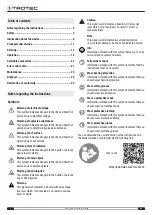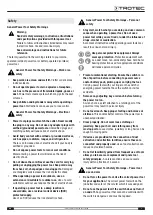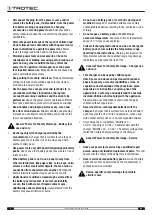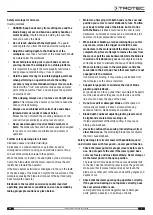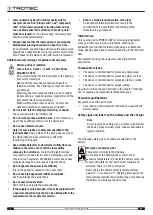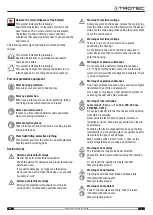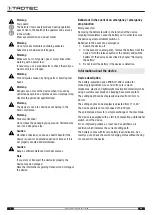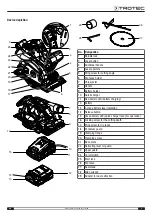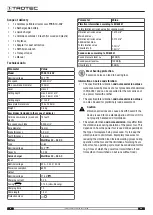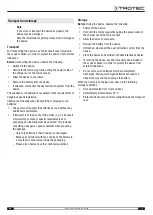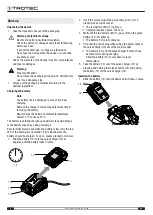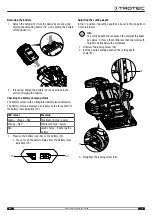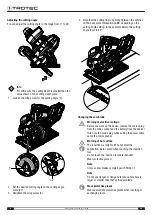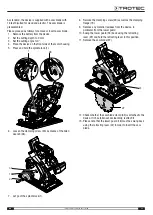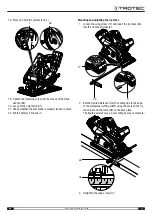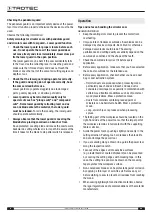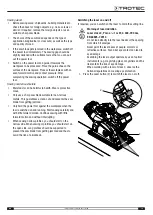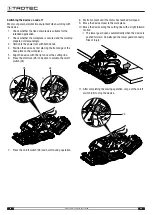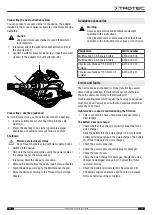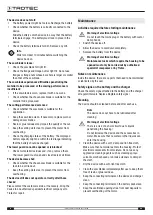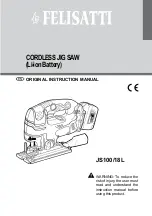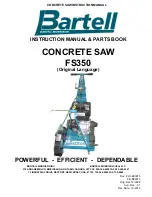
10
EN
cordless portable circular saw PCSS 10-20V
Scope of delivery
•
1 x Cordless portable circular saw
PCSS 10-20V
•
1 x Rechargeable battery
•
1 x Quick charger
•
1 x Carbide saw blade 18 teeth (for wood and plastic)
•
1 x Rip fence
•
1 x Adapter for dust extraction
•
1 x SW5 Allen wrench
•
1 x Transport case
•
1 x Manual
Technical data
Parameter
Value
Model
PCSS 10-20V
Nominal voltage
20 V
Idle speed
3,800 min
-1
Max. saw blade diameter
150 mm
Laser
class 2
Cutting depth
max. 48 mm at 0°
max. 36 mm at 45°
Cutting angle
0° to 45°
Base plate dimensions
135 x 245 mm
Weight
2.6 kg
Saw blades (included in the scope of delivery)
Carbide saw blade for wood and
plastic
18 teeth
Idle speed saw blade
9,000 min
-1
Bore diameter
16 mm
Blade thickness
0.9 mm
Teeth thickness
1.6 mm
Battery
Multiflex 20 – 2.0 DC
Type
Li-ion
Nominal voltage
20 V
Capacity
2.0 Ah
Quick charger
Multiflex 20 – 2.0 AC
Input
Nominal voltage
220 – 240 V / 50 Hz
Power consumption
65 W
Output
Nominal voltage
21.5 V
Charging current
2.4 A
Fusing
3.15 A (slow-blowing)
Charging time
1 h
Cable length
1.5 m
Protection class
II /
Parameter
Value
Vibration information according to EN 62841
Total vibration emission value (for sawing wood):
Vibration emission value
Main handle a
h
Vibration emission value
Additinal handle a
h
Total vibration value
Uncertainty K
1.879 m/s²
2.213 m/s²
2.2 m/s²
1.5 m/s²
Sound values according to EN 62841
Sound pressure level L
pA
89 dB(A)
Sound power level L
WA
100 dB(A)
Uncertainty K
3 dB(A)
Wear hearing protection.
Excessive noise can lead to hearing loss.
Information on noise and vibration:
•
The specified total vibration
and noise emission values
were measured by means of a test procedure standardized
in EN 62841 and can be consulted for the comparison of
one power tool with another.
•
The specified total vibration
and noise emission values
can also be used for preliminary load assessment.
Caution
Vibration emissions can cause a health hazard if the
device is used for an extended period of time or if it is
not properly handled and maintained.
•
The actual vibration
and noise emission
may differ from
the stated values during operation of the power tool. This
depends on how the power tool is used and especially on
the type of workpiece being processed. Try to keep the
vibration load to a minimum. Exemplary measures for
reducing the vibration load include wearing gloves during
operation of the tool and the limitation of working hours.
All parts of an operating cycle must be considered for this
(e.g. times at which the power tool is switched off and
times when it is switched on but runs without load).


